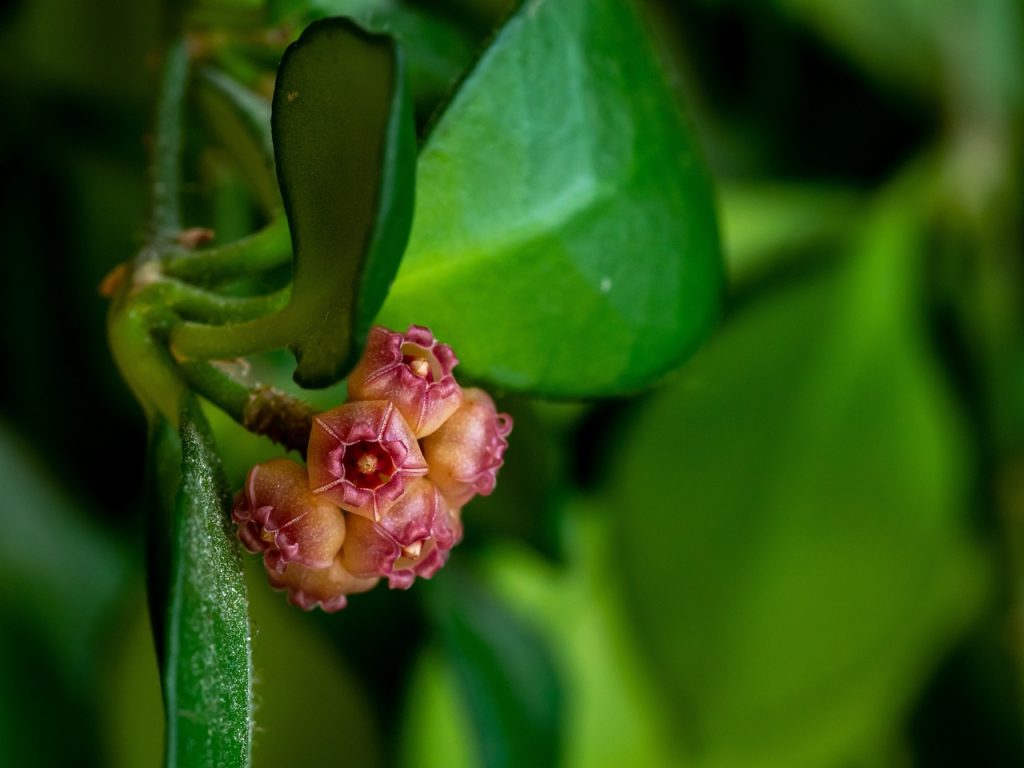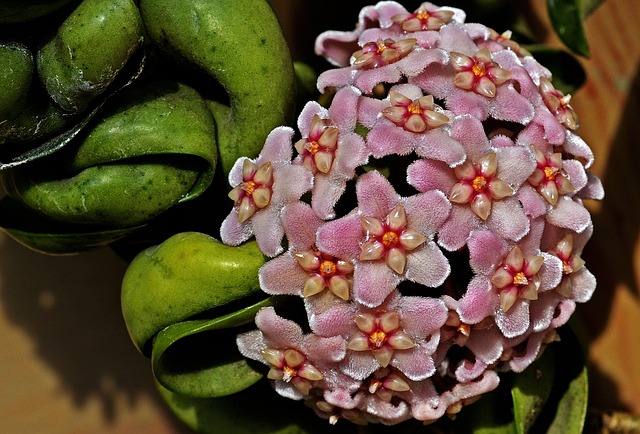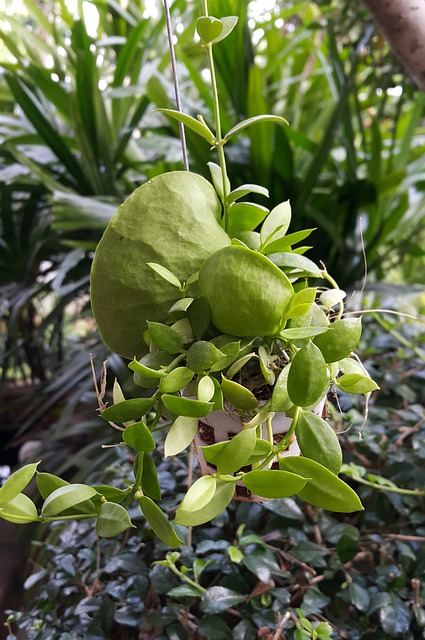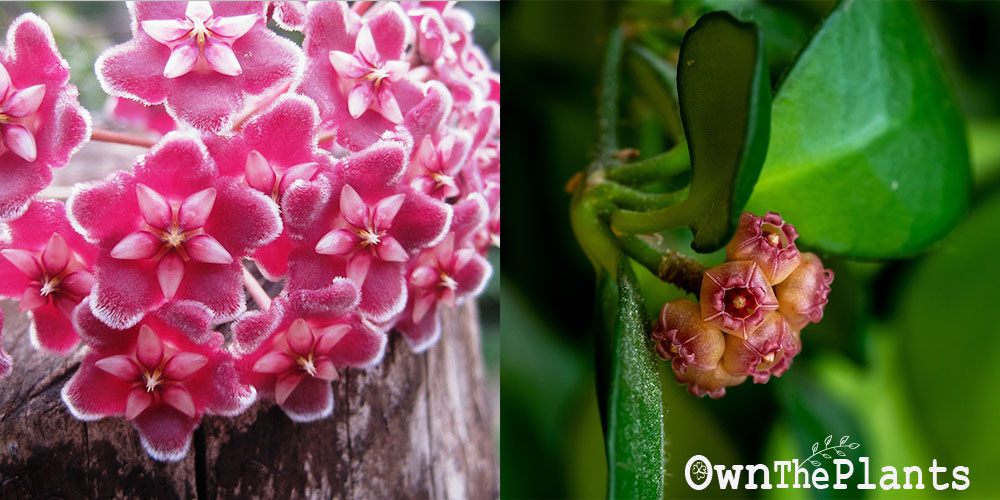Depending on the type of plants, the requirements differ from one another.
For example, most like bright indirect lighting; however, some could best grow under shade or direct light even for a period of time. This is why it is important that you know what’s best for your plant.
If you are a Hoya plant owner who wants to give the best care for your plant, then you’ve come to the right place!
In this article, we will show and discuss with you one of the most often neglected requirements in Hoya gardening: Humidity.
Do Hoyas love humid conditions? What levels of humidity should we aim to get a healthy and blooming Hoya? What do you need to do to keep the best level of humidity for Hoya plants?
We’ll find all the answers to these questions below.
Do Hoyas Like Humidity?

Hoyas are tropical vining plants that natively live in lush rainforests with constant rain and a moist environment. Because of this natural habitat, these plants have adapted best to heavily humid environmental conditions as compared to your other houseplants.
In order for your plant to thrive at its best, maintain a humidity level of 60% to 70%.
If you want to do it indoors, you can use a humidifier or frequently mist them to maintain the best humidity levels.
It is always essential to know the native origins of your plant because it will give you the ideal conditions you must emulate for it to grow healthily.
As for the case of Hoyas, think of the conditions inside a tropical rainforest. It is the best for your Hoyas.
What Happens When Hoyas Do Not Get The Right Amount of Humidity?
When the basic requirements of plants are not met, the plant cannot function at its best. It does not mean that they will die right away, but their functions will surely be restricted.
However, if they are left under unfavorable conditions for a very long time, your plant will surely not survive.
If the humidity requirement of your Hoya plant is not met, there is a high chance that your plant will show symptoms of underwatering.
Browning of leaves can be observed, along with crispy leaf tips. Thinning and shrinking of leaves can also be seen as plant cells shrink due to loss of water.
You might like: Why Does My Monstera Have Brown Spots? (6 Causes + Fix)
How to Properly Take Care of Hoyas
Hoya care and maintenance are actually pretty easy to follow, especially for beginners. No mastery level is needed for you to start your Hoya garden.

Here are the basics of how to properly take good care of your dashing Hoyas.
Provide bright, indirect sunlight.
Remember that your Hoyas are adapted to the environmental conditions in the forest where they get shaded by tall trees. Hence, they are mostly accustomed to dappled light that is not extremely intense.
If you place your Hoya under direct light for a long period of time, its leaves will get scorched.
UV rays from the sun harms the chlorophylls, the green pigments of the leaves, which aids the plant in making food. Without food, the plant will eventually die.
When grown indoors, the best place is in windows facing northwest. You can also put sheer curtains on your windows to filter intense sunlight.
Use appropriate well-draining mix.
Hoyas thrive best in light, airy, well-drained potting mix. These characteristics of soil mix is important because Hoyas are susceptible to root rotting when oxygen is less and roots are soaked in water for a long period of time.
To achieve the perfect blend of potting medium, mix your garden soil with equal parts of peat moss, perlite, and cactus mix.
This particular mixture allows water to drain easily while retaining the right amount of moisture your Hoya needs. Surely, this mix will make your Hoya happy and thriving.
Use porous containers or pots.
As said before, Hoyas are prone to root rotting due to overwatering, especially when the roots are soaked in the water for a long.
Thus, it is important to use planters that allow water to easily drain out.
Terra cotta pots are the best pots to use since baked clay has porous surface, which helps prevent water accumulation and promotes proper aeration in the soil.
A porous pot and a good potting mix is a great combination for your Hoya plants.
Provide water only when needed.
Hoyas can be fussy plants when it comes to their watering routine.
Even though they are adapted to daily rain and heavy moisture in their natural habitat, they are vulnerable to overwatering and to diseases that come with it.
Watering is crucial, but the best thing that you can do for your plant is not to stick to a fixed watering routine. Watering is tricky, but it must solely depend on the need of the plant.
If the soil is still moist, skip watering for a day or two. If the soil is already dry and cracky, then its your sign to proceed with your watering.
Provide appropriate temperature range.
Because your Hoyas are adapted to tropical climates, they are not tolerable to cold temperatures.
Hence, it is important for you to keep your plant in a location where temperature range is optimum for their survival.
The best temperature for your Hoya plants is around 62°F to 80°F. They can survive a bit colder temperature, but when it falls below 50°F, the plant is at high risk for death.
During the winter season, put your Hoya plants indoors to keep them warm.
Keep a humid environment.

Since they come from rainforests, Hoyas love humid environment, but not too much that they get soaked for a long time.
If you want your Hoyas to have broad, healthy green leaves, and mesmerizing blooms, always strive to maintain a humidity level of at least 60% to 80%.
You can achieve this either by using a humidifier and placing it near your plant, or by frequent misting.
One other option is by building a small glasshouse along with a humidifier to maintain an atmosphere that is damp and water-dense.
Use fertilizer efficiently.
Just like any other houseplants, your Hoya plants need an effective plant feed to fulfill their nutritional needs.
A regular, well-balanced NPK fertilizer will augment the vital needs of your plants in order to perform metabolic functions such as photosynthesis.
Fertilizers also speed up plant growth and will help your Hoya bloom in just a short amount of time.
It is suggested to feed your plant every two weeks or once a month in spring and summer, during their actively growing season. Limit your feeding during the winter season to avoid chemical burns.
To encourage your Hoya to bloom, use a phosphorous-enriched fertilizer. This element acts as flowering booster to plants.
What Happens When You Overwater Hoyas?
To maintain moist and damp environment, plant owners often make mistakes in overwatering Hoya plants.
It is very easy to overwater Hoyas, hence you must be careful in giving water sustenance to your plants.
When you overwater your Hoya plants, it can lead to many risks and problems.
Here are the most common consequences of having an overwatered Hoya:
Root Rot
Root rotting is the most common problem that plants have when they stand in a waterlogged soil for a long period of time. Excessive watering often lead to root rot if not treated right away.
You will know your plant is suffering from root rot when the roots are already mushy and brown, and has distinctive foul smell of decay.
If you see signs of root rotting, immediately take steps to rectify it. Repot your plant immediately to a well-draining pot and right potting mix.
Do this before the roots of your plant is permanently damaged and unable to perform their function to the entire plant.
Chlorosis
Chlorosis is the gradual yellowing of foliage due to the breakdown of chlorophyll.
The chlorophyll is the green pigment of plants that harnesses energy from light to make plant food, in the process called photosynthesis.
When your chlorophyll is damaged, the normal functioning of plants is hampered, and consequently, also affects their growth and development.
If chlorosis is not immediately cured and left to worsen, it can cause shedding of leaves and eventual death to your plant.
Frequently Asked Questions
Do Hoyas prefer to be misted?
Because Hoyas love a heavily humid environment, one way to maintain the humidity level at its optimum is via misting. You can mist your plant at least once daily. Misting also helps clean the leaves from dust and grime build-ups.
However, you must not mist your Hoya more than twice to avoid leaf rotting. Excess moisture is also detrimental to your succulent vine.
How often should you water your Hoya plants?
Watering solely depends on the need of your plant. With changing weather and seasons, do not stick to a fixed schedule.
What you can do is check the soil of your plant first and then decide if your plant needs watering or not.
To do this, stick your finger to the top 2 to 3 inches of soil. If the soil is still already dry, this is your cue that your plant needs watering. If the soil is still moist, skip your watering and wait until it dries out. This way, you avoid overwatering your plant.
Final Thoughts
For your Hoyas, humidity is really an essential need for their growth. They love high humidity as they are adapted to it in their natural habitat.
However, excessively high humidity also kills them, as it promotes root rotting, fungal, and bacterial diseases.
Some people might think that growing plants is simple and pretty easy. They might think that water and light, with a dash of fertilizer every now and then, are just what the plant needs to thrive.
They fail to see that beyond the most basic requirements, there are a lot of genuine concerns to consider to properly take care of them.
Share your own Hoya experiences in the comment section down below. May it be a good experience, or a bad one, other Hoya gardeners may find the same experiences and relate to you.
We would love to hear from you!
